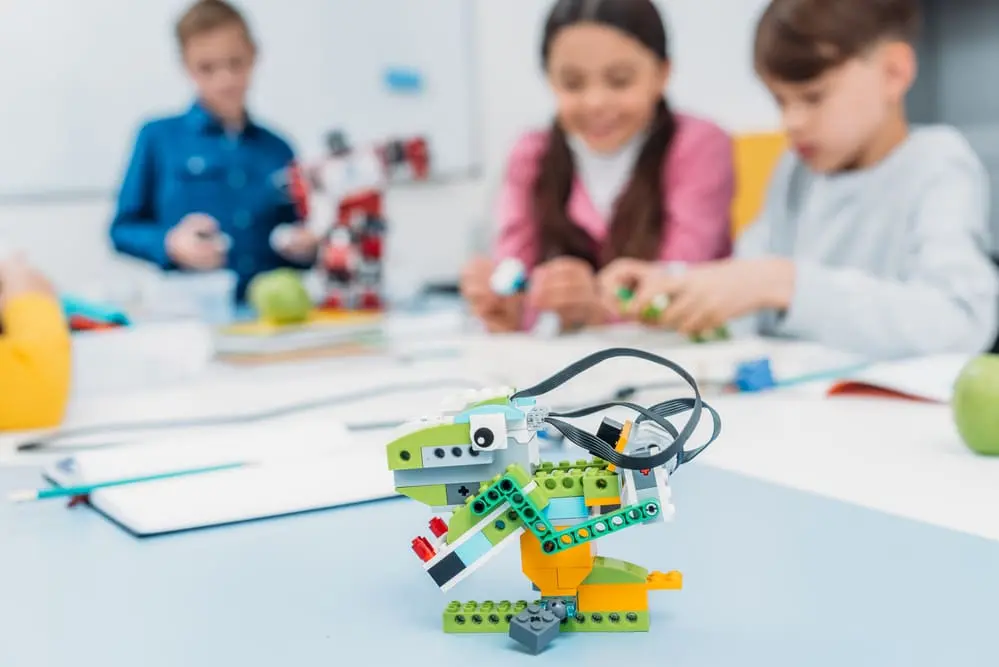
Why STEM Education is Important for Kids
STEM education goes beyond learning facts; it focuses on developing critical thinking, collaboration, and analytical skills that are vital for future innovation. Here’s why STEM education is so important for children:
1. Fosters Problem-Solving and Critical Thinking
STEM subjects encourage children to ask questions, test ideas, and find solutions. Whether they are solving a math problem or designing a simple machine, kids learn to think critically and approach challenges from different angles. This problem-solving mindset is valuable not just for STEM careers but in all aspects of life.
2. Prepares Kids for Future Careers
In an increasingly tech-driven world, many future jobs will require skills in STEM fields. According to studies, there is a growing demand for professionals in fields like computer science, engineering, data science, and healthcare. Introducing kids to STEM early can spark their interest and set them on a path toward pursuing careers in these lucrative and impactful industries.
3. Encourages Creativity and Innovation
STEM isn’t just about numbers and equations; it’s also about creativity. Engineering projects, for example, often require children to think outside the box to design solutions to real-world problems. Encouraging creativity in these subjects helps children become innovators who can make a difference in the world.
4. Builds Resilience and Persistence
Failure is a natural part of the learning process, especially in STEM. When kids encounter setbacks, such as a science experiment that doesn’t go as planned or a coding project that doesn’t work, they learn how to handle failure, analyze what went wrong, and try again. This resilience is an important life skill that helps children navigate challenges both in and outside of school.
Ways to Encourage STEM Education for Kids
Whether at home or in the classroom, there are many fun and engaging ways to introduce kids to STEM concepts. Here are some practical tips for parents and educators to encourage children to explore STEM:
1. Hands-On Learning Activities
Kids learn best when they can engage with the material in a tangible way. Hands-on activities that involve building, experimenting, or creating can ignite curiosity and make STEM concepts come to life. For example:
- Building with LEGO: Many LEGO sets incorporate engineering principles, allowing kids to design structures, vehicles, and robots.
- Science Experiments: Simple at-home science experiments, like creating a volcano with baking soda and vinegar or experimenting with water’s surface tension, are a great way to get kids excited about science.
- Coding Games: Websites and apps like Scratch or Tynker teach kids the basics of coding through interactive games that allow them to create their own projects.
2. STEM Toys and Kits
STEM-themed toys and kits can provide a fun, engaging way to learn. Many toys are specifically designed to teach children about robotics, engineering, coding, or even the physics of motion. Some popular STEM toys include:
- Robot-building kits: These teach kids about programming and robotics while encouraging hands-on building.
- Electronics kits: These sets introduce children to electrical circuits, making learning about electronics interactive and fun.
- Math Games: Fun card games or board games that challenge kids’ mathematical skills can turn learning math into an enjoyable experience.
3. Encourage Exploration and Curiosity
Encourage children to ask questions and explore the world around them. When they show curiosity about how something works — whether it's how a phone operates, how bridges are built, or how computers process information — take the time to research the answer together. A simple inquiry can lead to an in-depth exploration of a STEM concept.
4. Use Technology and Online Resources
Technology can be a great tool for learning, especially in the STEM field. Online platforms, apps, and educational websites provide resources that make learning interactive and fun. Some popular STEM-focused online resources include:
- Khan Academy: Offers free lessons on subjects like math, physics, and computer science.
- Code.org: A free platform that teaches children how to code through fun games and interactive lessons.
- National Geographic Kids: A site packed with fun facts, games, and activities related to science and nature.
5. Join STEM Clubs and Competitions
Encourage children to join clubs or extracurricular activities that focus on STEM. Many schools and community centers offer programs in robotics, coding, and engineering, where kids can work on projects with their peers. Participating in STEM competitions, like robotics tournaments or science fairs, can provide a fun and challenging environment where kids can apply what they’ve learned.
6. Introduce Role Models and Mentors
Expose kids to role models who have succeeded in STEM fields. Reading biographies of female scientists, female engineers, or famous mathematicians can inspire kids to believe they too can excel in STEM. Additionally, connecting children with mentors who work in STEM industries can provide guidance and real-world examples of how STEM education leads to fulfilling careers.
STEM Careers: Future Opportunities for Kids
While it's important to start with fun activities and curiosity-driven learning, understanding the potential career opportunities in STEM can motivate children to take an active interest in their education. Here are just a few exciting STEM careers that may spark kids’ imaginations:
- Software Engineer: Develops applications and systems to solve problems using coding and programming languages.
- Biomedical Engineer: Designs and develops medical devices and equipment that help improve patient health.
- Astronaut: Uses scientific knowledge to explore space and conduct experiments in orbit.
- Civil Engineer: Plans and builds infrastructure like bridges, roads, and buildings.
- Data Scientist: Analyzes and interprets complex data to make business decisions or solve problems.
- Robotics Engineer: Designs and builds robots that can perform a variety of tasks, from industrial work to personal assistance.
Conclusion: Inspiring the Next Generation of Innovators
Introducing kids to STEM education is not only about preparing them for a future career — it’s about fostering a mindset of exploration, curiosity, and problem-solving that will serve them throughout their lives. By incorporating STEM activities into daily learning and making science, technology, engineering, and math engaging and fun, we can help create the next generation of innovators, thinkers, and leaders who will shape the future. Whether it's through hands-on activities, interactive apps, or simply encouraging curiosity, every child can benefit from the world of STEM education. The possibilities are endless, and the adventure is just beginning.






